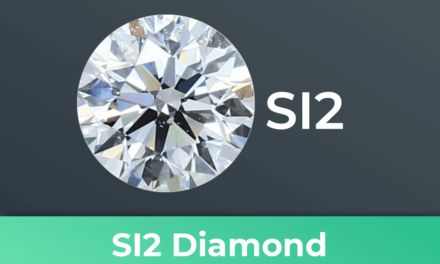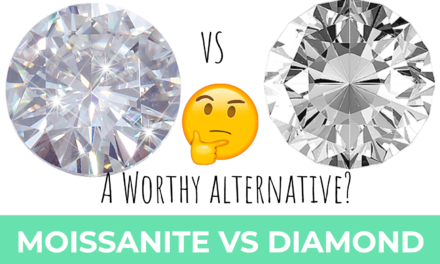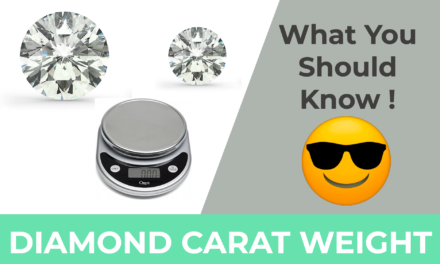My website is reader-supported. Buying through links on my site may result in me earning a CUSTOMER REFERRAL FEE at no extra cost to you.
Check out the latest deals at our top diamond vendor choice: James Allen
I COLOR DIAMOND – TOO YELLOW FOR AN ENGAGEMENT RING?
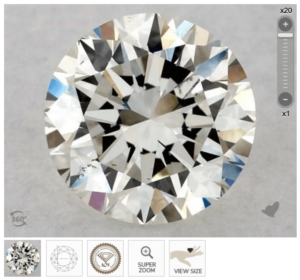
I color diamond, 1.04ct, VV2 clarity grade, ideal cut quality
While looking for the perfect diamond, you might have come across I-color-diamonds. Diamonds are graded by color with grades from D-Z. The color grade of a diamond indicates how much yellowness is inside the diamond’s body. The highest grade, a d color diamond, has no color, whereas a Z color diamond is visibly yellow.
You might be wondering if an I color diamond is too yellow to make an impressive engagement ring. You might also wonder whether the slightly yellowish body color would be too noticeable in a white gold setting.
This article will let you in on everything you should know if you’re considering an I-color diamond.
Content overview
I-Color Diamond Summary
- Diamonds are graded from D-Z based on the amount of color they exhibit; a D color diamond is colorless
- An I-color diamond belongs to the near-colorless diamond range and is significantly cheaper than a colorless diamond
- I color diamonds are a popular color grade for diamond engagement rings, even white gold settings
- The best places to shop for I-color diamonds are James Allen and Blue Nile
WHAT IS AN I COLOR DIAMOND?
standard for grading diamond color. This standard uses the letters D to Z to grade diamonds from colorless to light yellow. A D color diamond is the best diamond you can get.
Compared to that, an I diamond is still a very good diamond color and is almost colorless. Along with the letters G and H, it belongs to the so-called “nearly colorless” range.
You can see a comparison of an I-color-diamond and a D-color diamond below:
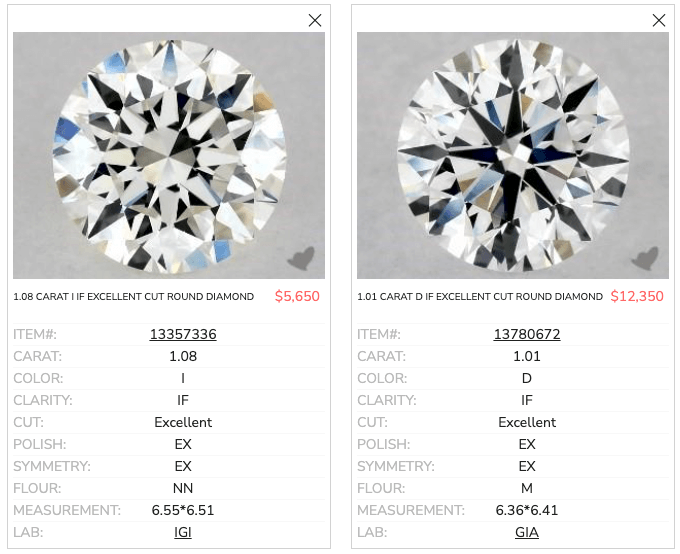
As you can see, the difference between an I-color diamond in the near-colorless range and a colorless diamond is barely detectable to the naked eye. The only time you would be able to detect a difference is if you put two loose diamonds next to each other under excellent light conditions (ideally on a white background or in a white metal setting or platinum setting).
But put those two diamonds in a yellow gold- or rose gold setting on an engagement ring, and you won’t be able to tell them apart at all.
However, because G, H, I, and J color diamonds are considered only nearly colorless diamonds and have very slight traces of color, an I-color diamond will be much cheaper than diamonds with a higher color grade.
Before taking a closer look at the price differences, look at the official GIA diamond color grade scale.
THE GIA COLOR GRADES IN DETAIL

- D-F Colorless Range: A color grade of D is the highest possible color grade. D color diamonds are completely colorless and are rare. E and F color diamonds are also considered colorless and are very rare. Only a trained gemologist would detect little hints of color. A diamond of the colorless range is also referred to as icy-white diamond
- G-J Near Colorless Range: Only an expert gemologist can detect a slight yellow undertone in these stones. Although GIA categorizes such diamonds as “near-colorless,” we would hesitate to include J in this category. That’s because you can notice a hint of color in a J color diamond.
- K-M Faint Coloring Range: Within this color category, you can see a hint of yellow in the diamonds. That’s even without comparing them to diamonds of a higher color grade. Online vendors do not sell diamonds lower than this category for engagement rings. In our opinion, K color diamonds can look spectacular when set in yellow gold.
- N-R Very Light Coloring: Diamonds with an N-R color grade have a very noticeable hint of yellow. They look very much like a diamond of poor quality.
- S-Z Lightly Colored: Diamonds in this color range have a hint of brown in them. Because of this, these stones are not much in demand.
- Fancy colored diamonds: Those exhibit strong color and are getting quite popular
I-color-diamonds belong to the “near-colorless” range. If you look at the color scale above, you can see that the color differences are very slight from one grade to the next.
Once a jeweler mounts an I color round cut diamond in a setting, it is challenging to spot any hint of color. That is, if the carat weight is below 2 carats.
YOU GET THE MOST FOR YOUR MONEY WITH G-I GRADED DIAMONDS
Now that you know that no one would notice the difference in color between near colorless and colorless diamonds in most instances, it’s time to see the price difference.
If you want to compare diamonds of varying color grades, go to James Allen’s Inspiration Gallery.
I’m using the identical diamonds you see above in the examples below. All these are 1-carat diamonds with VS1 clarity grade with an ideal cut. Their only difference is color. For a fair comparison, I chose the lowest-priced diamonds with these gradings.
The result for the near-colorless diamonds:
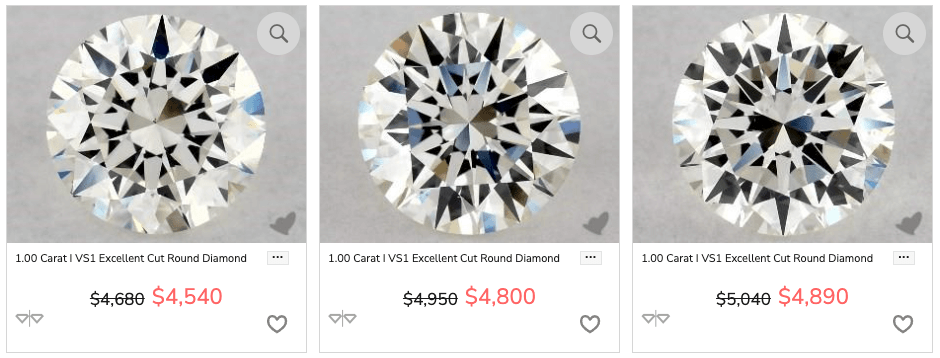
The result for the colorless diamonds:
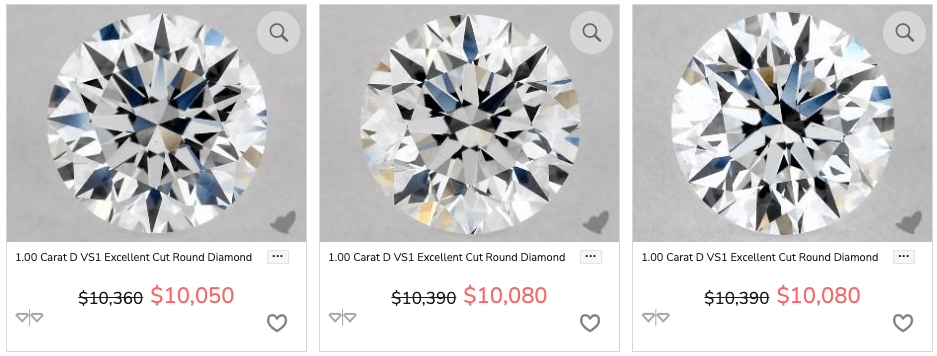
Look at the enormous price difference! A 1-carat D colorless diamond sells for nearly $10,000, whereas a little further down, a 1-carat I diamond sells for $4,800.
If you cannot see the difference in color with the naked eye unless you look at them side-by-side, why would you pay close to $1,000 more for the diamond?
To demonstrate just how much the price increases with each color grade, I put together a quick chart that shows the lowest price of a 1-carat VVS2 diamond with excellent polish and symmetry and no fluorescence:
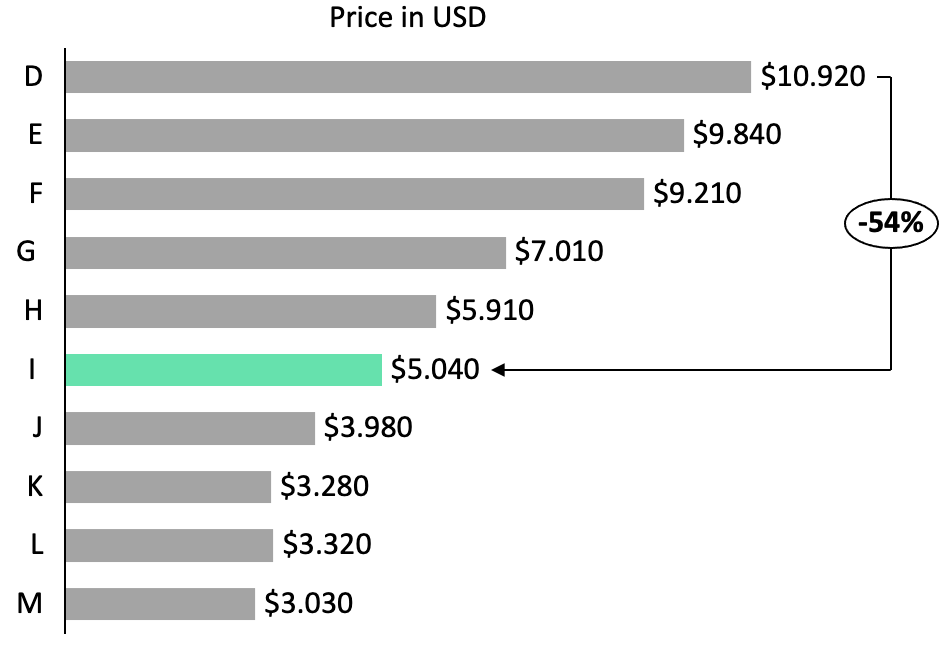
The prices above are based on natural diamonds. If you are interested in lab diamonds, prices of the same color grade will be significantly lower, even for a D color grade.
TIP: If you’re shopping for a diamond online and are not given photos so that you can see exactly what you’re buying, a G-H color diamond would be a safe bet. You may pay more, but at least you’ll have the assurance that there will be no visible hint of yellow. However, we do not recommend that you make such a significant purchase without seeing photos or videos of the diamonds you’re considering.
On James Allen, you’re able to search a huge selection of diamonds in your price range and view them in HD from all angles.
SHOULD YOU BUY AN I GRADED OR H COLORED DIAMOND?
This is a tough question to answer. I do not think anyone should stress over one color grade because it doesn’t make much difference. If you are on the fence, unable to choose between an H or I color diamond, check these two loose diamonds and see for yourself before making a diamond purchase:
- H graded grade diamond
- I graded grade diamond
It’s nearly impossible for even an expert to tell the difference between the two, looking down on them from the top.
That’s why I recommend that whatever money you can save on color, you can invest in getting a better cut grade, as well as an eye-clean diamond. Those two factors are crucial in getting the maximum amount of sparkle.
What color grade you should choose depends on various factors, with the most important ones being diamond shape, diamond size, and the color of the ring setting. You can see my recommendations for each type in the following section.
WILL AN I COLOR DIAMOND LOOK YELLOWISH IN A WHITE GOLD RING SETTING?
The vast majority of people would have difficulty seeing any hint of color when looking down on it from the top, no matter if it’s on a rose gold ring or in a yellow gold setting.
When you mount an I-color diamond in an 18k white gold or platinum setting, for example, the diamond will absorb and reflect the colors it is surrounded by. The light setting makes the diamond appear “whiter” due to the reflection of the white gold or platinum setting.
If you are set on a yellow gold- or rose gold band, you can confidently choose a diamond with a lower color grade. Perhaps a J, K, or even M, and it will look just fine.
But if your diamond will be set in white gold or platinum, you may not be fine with a J color.
Here are some guidelines on what color grade you should choose for the various type of ring setting metals (e.g., rose gold settings, white gold settings) and diamond shapes (e.g., round diamond, princess cut, oval cut, emerald cut diamonds):
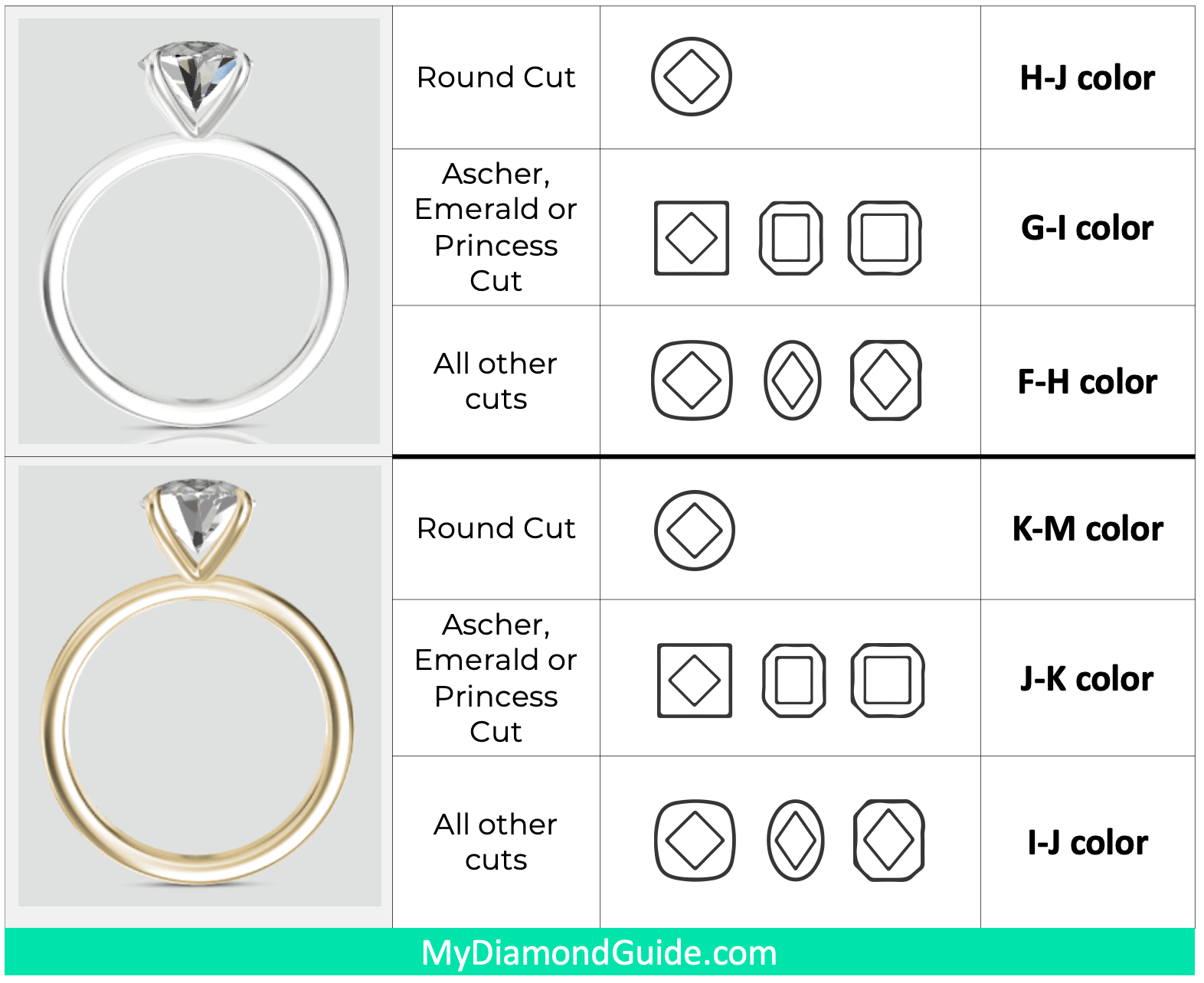
CONCLUSION
It’s completely understandable to want the best of everything, especially when choosing an engagement ring. However, if you are not highly color sensitive, you should be pleased with an I-color diamond engagement ring. An I color diamond gives you the most value for your money while still getting a diamond that looks white. Check out James Allen or Blue Nile to see a vast selection of high-quality GIA and AGS graded diamonds!

